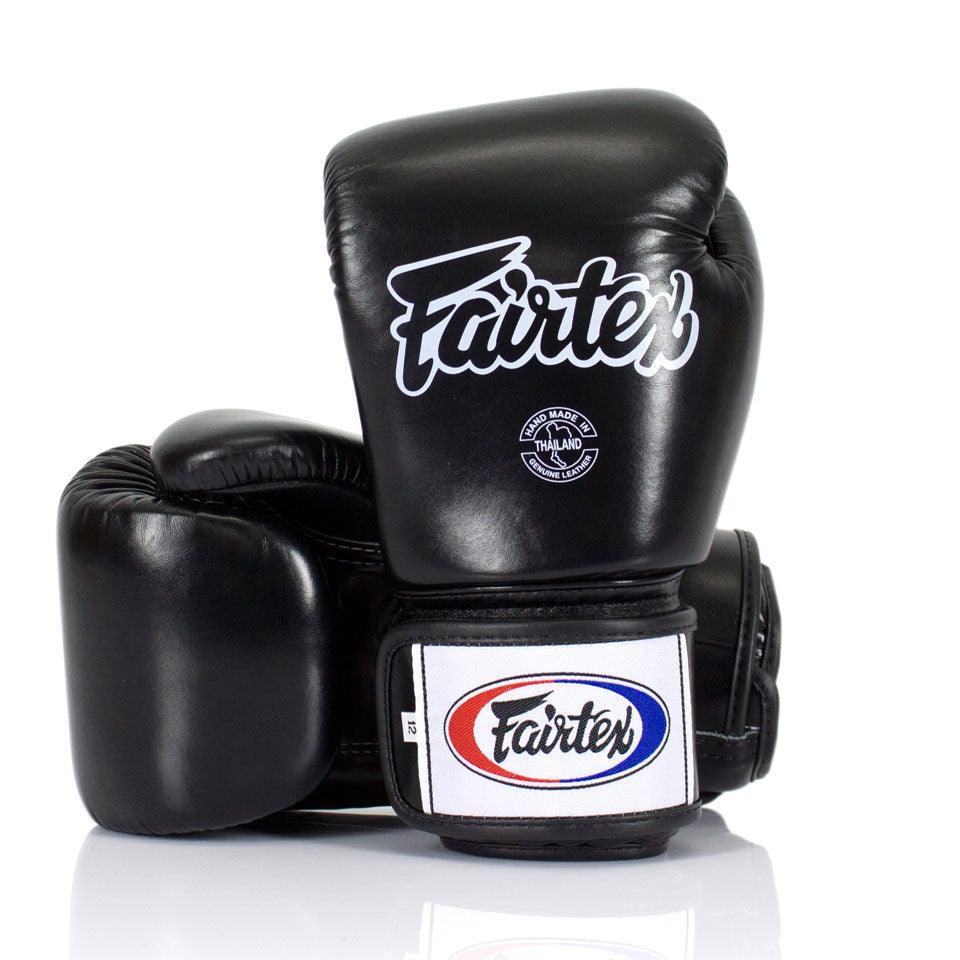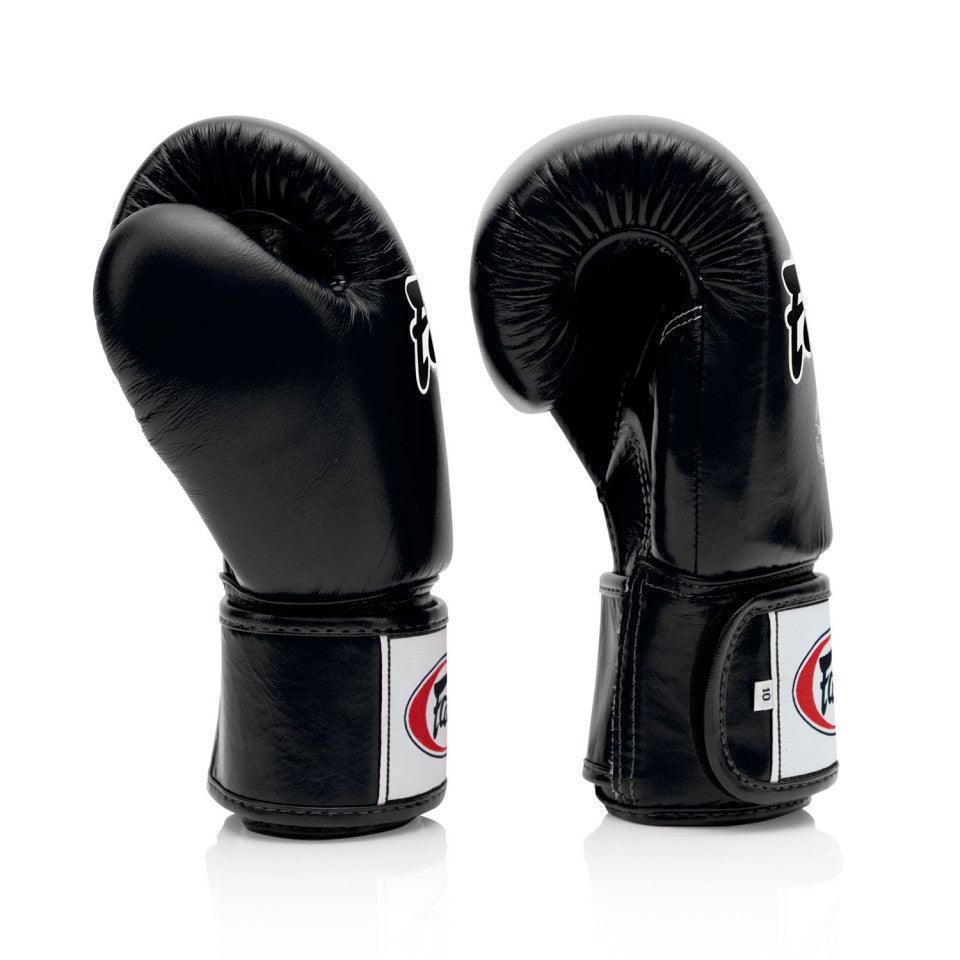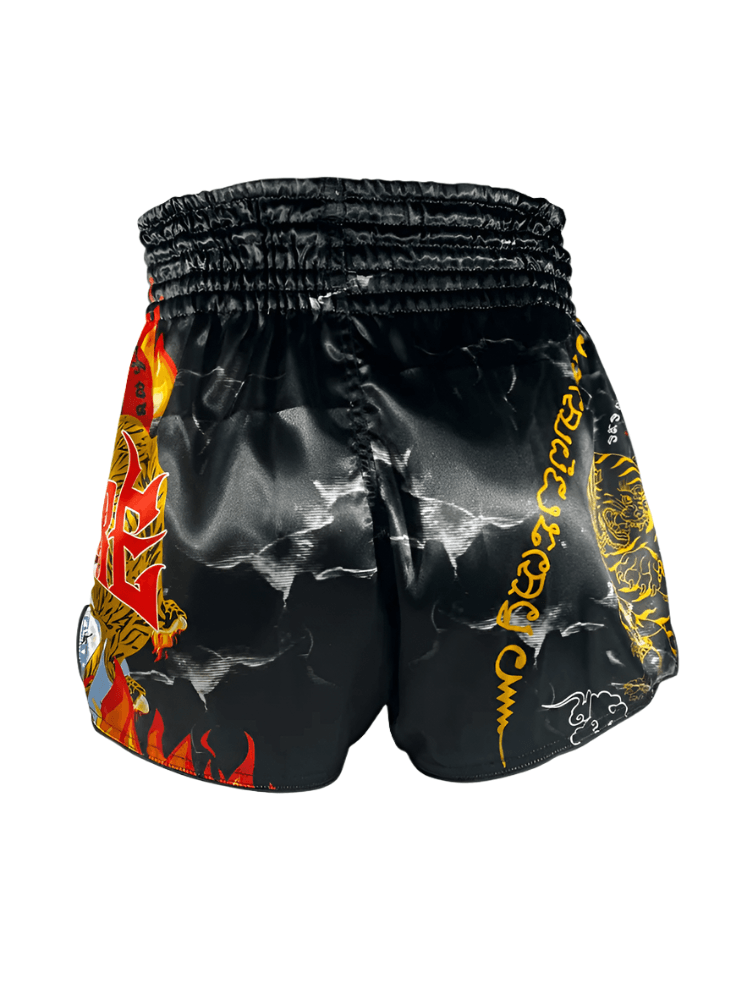The Scoring Card
The Muay Thai scoring card looks very similar to the ones used in Boxing and MMA and serves the same purpose: to help the judge keep reference of which competitor won which round and therefore make tallying the total easier at the end. While Muay Thai bouts aren't judged using a 10-point must system, judges still use a 10-point system to judge individual rounds – this can be confusing to understand at first, but it's about reference and tracking, helping the judge to make an accurate decision on the overall bout at the end.
Rounds are scored as follows:
- 10 – 10: Even, no distinct winner.
- 10 – 10+: One fighter edges the round (a + or dot is used)
- 10 – 9: One fighter wins the round clearly.
- 10 – 9: Both fighters are knocked down but one has the overall dominant performance.
- 10 – 8: One fighter is knocked down with an 8-count.
- 10 – 8: One fighter clearly dominates the other throughout the round.
- 10 – 7: One fighter is knocked down with an 8-count twice.

(Notice the dots against the score on the left hand column on rows 2 and 3. These likely indicate that the blue corner edged the rounds.)
This format has an advantage for fighters as, for example, if they lose the first few rounds by a small margin, they can go on to win the bout by dominating the latter rounds.
Strategic level: what's judged?
Fighters are judged at a strategic level on the three categories detailed below – each with varying degrees of importance. These help build an overall picture of one fighter's performance in comparison to the other.

Source: Tony Myers www.muaythaijudging.com
Effective Aggression
Essentially, this is the measure of accurate, powerful strikes which are executed with proper technique and land with power, irrespective of positioning or movement direction of the fighter throwing the strike (i.e. they can be moving back or against the ropes and still strike accurately and effectively). This is the most important category for judges, often constituting up to 70% of the decision criteria. It's also crucial for the fighters and the more accurate and power strikes they land, the more damage they'll deal to their opponent and the higher the chance for a TKO or KO.
The terms “effective” and “proper technique” are layered in this context as there are various aspects of a strike (how it is thrown, the damage it causes, the way it lands etc.) which constitute whether a strike is considered as such. This is detailed below in the technique level.

Ring Generalship
The second category (up to 20% of decision criteria) considers how a fighter is dictating the action and pace of a fight while hindering their opponent's performance and controlling exchanges (whether through offence and/or defence). Controlled movement combined with accurate strikes which imbalance your opponent and disrupt their strikes is a core aspect of effective ring generalship.
A fighter can have effective ring generalship whether they are moving forward, backwards, side to side or are being pushed up against the ropes. As long as one fighter is effectively striking and defending while limiting their opponent's ability to strike and defend, they will score more highly in this category.

Pure Aggression
This final category (up to 10% of decision criteria) considers which fighter is dictating the pace and forcing the action. It's about measured and effective aggression which forces your opponen to back up or take action rather than being tentative. While it's the lowest of the three scored categories, it can prove the edge in a close fight and grant an advantage to naturally aggressive fighters, for example Muay Mats (heavy punches and low kicks) or Muay Khaos (knees & clinch).

Technique level: how do techniques score & which score the best?
Judges are not impressed by a fighter who causes damage and dictates the fight with sloppy technique, sluggish movement and improper execution. Muay Thai is an art form and the precision and grace with which one portrays the various aspects of the art influences judges' perceptions.
Judges are looking for clean, swift execution of techniques which cause damage and land on the intended strike zone, without getting blocked, avoided or re-directed. For example, a kick which is aimed at the head and lands cleanly on the neck, jaw or temple without being blocked and is thrown quickly by the striker without them losing position or balance will be highly rated, even more so if the kick drops the opponent and/or clearly damages the opponent by cutting them or invoking dizziness. Conversely, if a kick which is aimed at the body lands on the opponent's arms and doesn't force them to re-position or lose balance, this should score lowly because it still makes effective impact against the arms but is blocked from its intended target. If that same kick was to be checked it wouldn't score at all.
The Muay Thai Scholar, Aaron Jahn, does a great job of breaking down to which grade individual strikes score, utilising research undertaken by the globally renowned Muay Thai referee Tony Myers. See his infographics on scoring teeps, knees and kicks.

Graphic built by Sonny Brown taking inspiration from famous Golden Age fighter & coach Arjan Prahmod
Key considerations
The first round
It's often misunderstood outside of Thailand that the first round in a Muay Thai fight doesn't count towards the overall scores. This perception is common because in the first round, the two fighters adopt a cautious approach, focusing on one another's movement's and feeling one another out with light strikes that are designed to gauge range and study reactions. While there may not be much action, the round does still counts towards the overall score but it's commonly scored 10-10.
In Thailand, this is incredibly common and also undertaken so the bookies at ring side have a chance to make up or revise their odds.
The fifth round
Unless a bout is extremely close and both fighters feel they have a chance to edge the last round for an overall victory or capitalise on their opponent's fatigue and get a TKO/KO, the fifth round can also be slow and somewhat uneventful like the first.
If both fighters believe they've won already or one has clearly won, it's common to see them raise their hands and touch gloves. These are signs of pre-empting victory and if one fighter initiates a glove touch and the other accepts, the latter is likely acknowledging defeat. As such, the action will slow down as neither fighter wants to unnecessarily damage themselves further. After all, many fighters, especially in Thailand, fight very frequently (some every 1 or 2 weeks) and therefore do not want to risk an injury if they are sure of victory or defeat.
Traditional VS Modern
What we've covered in this article is focused on traditonal Muay Thai. It's the most common type of Muay Thai fight and the vast majority of promotions globally feature these types of bouts. Rajadamnern World Series puts on elite level fights of this kind at Rajadamnern Stadium.
One Championship, however, have a different approach to rules and scoring. With a focus on damage and knockouts, One Championship athletes compete in 4oz gloves. This encourages aggression and boxing, with bonuses often being paid to those who push the pace the most and perform the most brutal knockouts. They also score each round individually, just like with boxing and MMA, and then add up the scores - this is very different to traditional Muay Thai where bouts are judged in their entirety.
This approach has pros and cons. Some people prefer the fast paced action it offers compared with some traditional Muay Thai bouts. Others consider it too violent and bad for the fighter's long-term health. Either way, many elite level athletes enjoy it and it enables them to showcase their skills on the world stage.
Conclusion
Unless one fighter clearly dominates the other from start to finish, it's not easy to judge a Muay Thai fight using the Thai system. Although, the intricacies of it arguably make it a fairer way of judging bouts than the 10-9 must system in boxing and MMA, however, that's if the judges have no bias to either fighter of course.
Understanding how Muay Thai fights are scored builds your understanding of the overall martial art, while ensuring you have the necessary knowledge to evaluate where you stand in the judges' eyes if you're in a fight. For example, knowing the rules enables you to be mindful of ways you can adapt if you're behind on the cards in order to get ahead. This latter point is also a crucial reason why your coaches and corner team fully understand the rules too.










